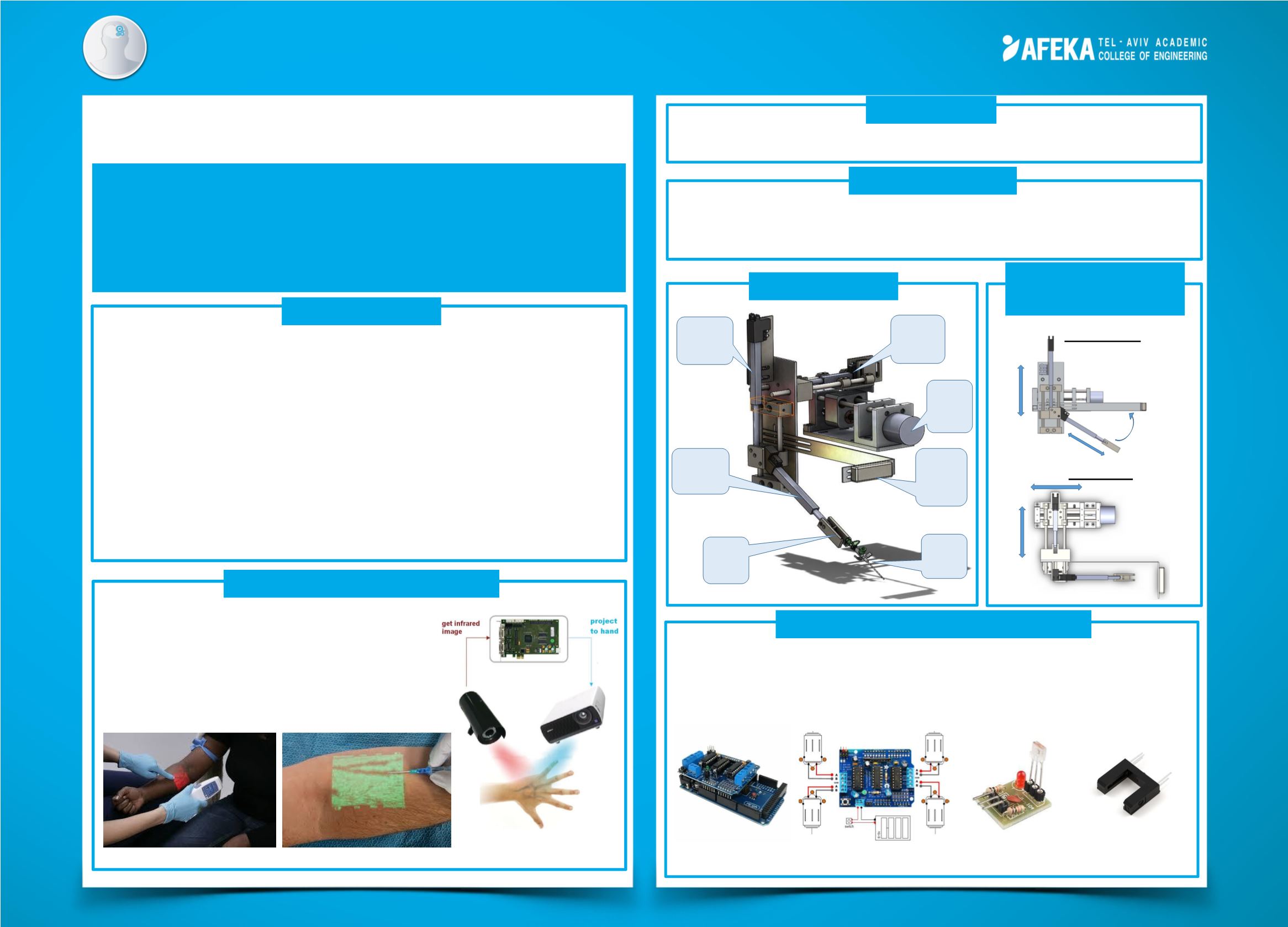

Developing device for
automated IV insertion
Daniel Shwarts
Advisor: Dr. Milad Hamisa
Medical Engineering
The project’s essence is to develop, design and build a
medical device which will imitate the human intravenous
insertion movement. The device replaces the human
factor in the IV therapy, and by that contributes to a
successful, accurate, and efficient operation.
The main goal of the project is to create a prototype device that will be able to
insert a needle into an experimental system that will simulate a patient’s vein.
Goal
Background
•
The device needs to be able to imitate the clinicians insertion technique.
•
The device needs to be able to define when the needle penetrates the vein
.
Requirements
Movement
Properties
Vein Finder Technology
Projected near-infrared light is absorbed by
blood and reflected by surrounding tissue. The
information is captured, processed and
projected digitally in real time directly onto the
surface of the skin. It provides a real time
accurate image of the patient's blood pattern.
12V
DC
Motor
Linear
Actuator
Linear
Actuator
Position
Sensors
Blood
Sensor
Needle
Linear
Actuator
Front Plane
Top Plane
The Device
Electrical Properties
• The “brain” of the system is Arduino MEGA. It is responsible for receiving data
from all sensors, processing and sending it forward to the motors.
• In order to control 4 motors’ motions, a Motor Shield was added to the Arduino.
• 3 laser sensors are responsible for detecting the penetration point.
• Photogate sensor is used for detecting the point in which the needle is in the vein.
Arduino MEGA
with Motor shield
Motor shield diagram
Laser Sensor Photogate Sensor
One of the most common actions in hospitals all over the world, is the
intravenous therapy, or in short IV. Intravenous therapy is the infusion of fluids,
drugs or blood products directly to the vein, and from there the entire blood
cycle through the heart.
A successful action, depends on the nurse’s/doctor’s motor coordination
professionality. It requires a training, and a good deal of experience, especially
when working with the infants and children.
Errors are common and clinicians often end up repeating their attempts at
placing the needle. This often causes pain, distress and frustration.
Researches show that 15-30% of attempts suffer complications.
















